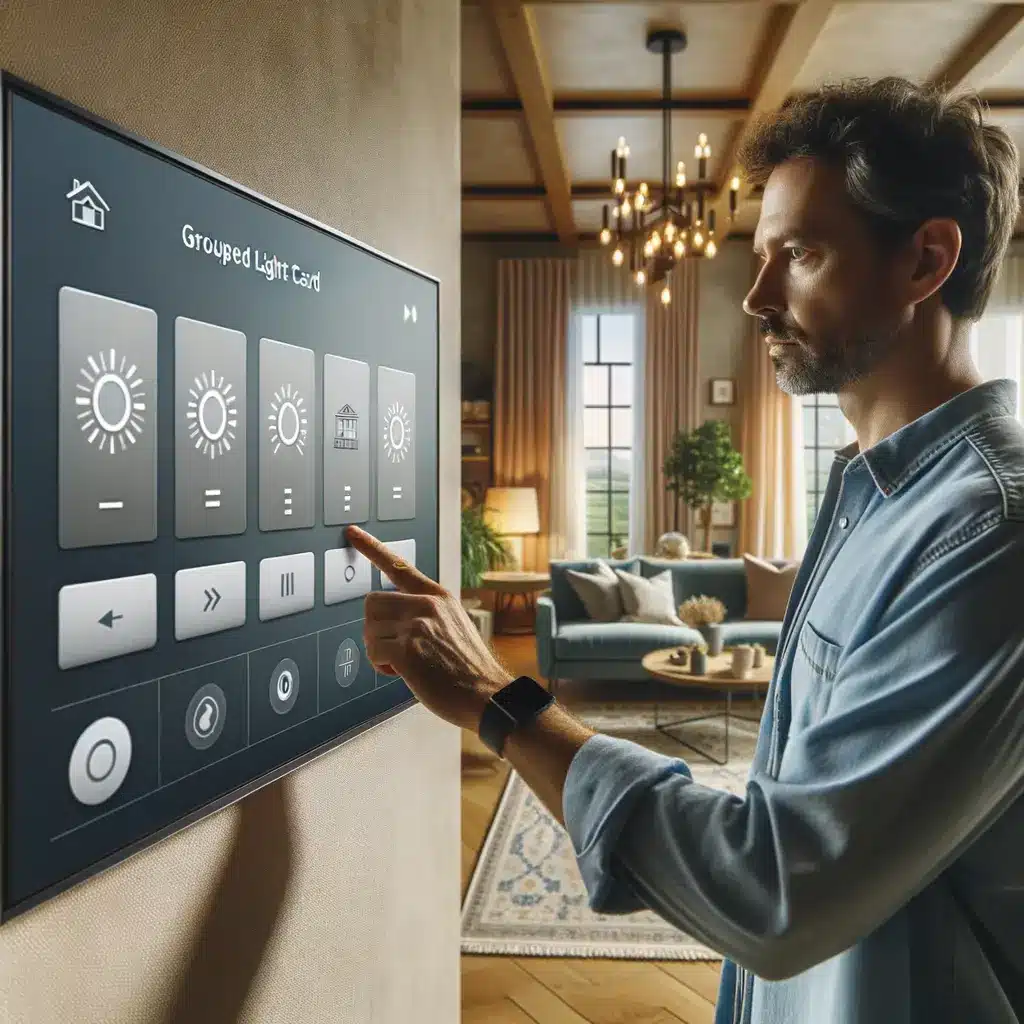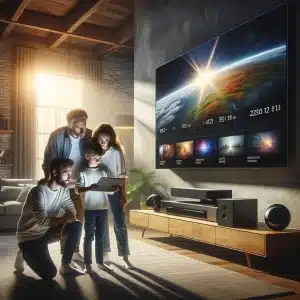Introduction to the Home Assistant 2025.8 Release
The August 2025 update, officially called Home Assistant 2025.8, is now live and it is packed with incremental yet meaningful improvements aimed at everyday users and power-tinkerers alike. If you skipped a few releases, this is the perfect version to jump back in. The headline additions include AI-powered name and description generation, a brand-new “Generate Data” action for interacting with large language models (LLMs), noticeably faster voice responses, and smarter controls for groups. Combined, these upgrades make Home Assistant 2025.8 feel more responsive, more flexible, and ultimately more helpful in real-world smart-home scenarios.
For anyone coming from 2025.6 or 2025.7, you’ll notice that the new AI features are optional—meaning you can keep your current YAML-first workflow intact while still benefiting from refinements such as improved time-based automation triggers. We’ll dive into each new feature in detail, show you practical examples, and highlight potential use cases so you can decide what to adopt first. Throughout this article we will reference the primary keyword Home Assistant 2025.8 to help you quickly locate the information you’re searching for. If you’re looking for guidance on dashboards or cloud configuration, check out our guides on Building Custom Dashboards and Setting Up Home Assistant Cloud, both of which integrate perfectly with the enhancements in this release.

AI Suggestions Transform Workflows in Home Assistant 2025.8
Arguably the most talked-about feature in Home Assistant 2025.8 is AI Suggestions. By setting a default AI agent—OpenAI, Gemini, Claude, or Ollama—you can now click the star icon that appears in specific dialogs to automatically generate helpful text. At launch the capability is confined to the Save dialogs for Automations and Scripts, but even this limited scope shows huge potential. Rather than racking your brain for a concise automation name at 2 a.m., let the model propose one that clearly expresses what the automation does. Beyond convenience, this brings consistency to large installations where descriptive naming conventions matter for long-term maintenance.
To enable the feature, head to Settings → System → General and choose your preferred AI integration. If nothing appears, simply add one of the supported providers first. Once activated, click the star icon in a Save dialog and watch the AI craft a human-readable summary in seconds. Because Home Assistant 2025.8 keeps AI requests transparent, you can always edit or override the results before you commit. That transparency is crucial, as AI can occasionally hallucinate or misinterpret context. Treat suggestions as a draft, not gospel.
Looking ahead, the development team has hinted that full automation generation could be on the horizon. That means newcomers will have an easier on-ramp, while seasoned users can still fine-tune YAML under the hood. Keep an eye on our in-depth guide to Home Assistant AI suggestions, which we’ll update as new capabilities roll out.

Generate Data with LLMs and Streamlined Voice Responses
Home Assistant 2025.8 also adds the new “Generate Data” action, which dramatically simplifies sending information to an LLM and parsing its structured response. Think of it as an API wrapper for AI that you can insert directly into Automations or Scripts. Practical examples include:
• Submitting snapshots from an IP camera every few minutes to detect delivered packages, then triggering a doorbell alert only when a box is present.
• Uploading your monthly electricity bill PDF and asking the model to extract total usage, cost, and tariff so that these figures populate sensors you can chart on your energy dashboard.
• Translating notifications into multiple languages for bilingual households.
Because the response can be returned as JSON, you get predictable keys for use in templates, conditions, and actions—no more regex hacks. That means fewer brittle automations and faster prototyping.
Voice control gets an equally important boost. Previously, asking a lengthy question resulted in a long pause while the entire answer was generated. In the Home Assistant August 2025 release that delay is gone; responses now stream word-by-word just like the web chat experience. If you’re using Home Assistant Cloud, it works out of the box. For local setups, update your local LLM add-on and enjoy the same snappy feedback. Pair these improvements with a well-tuned wake-word engine and your smart-home now feels as conversational as the big-name assistants—without sacrificing privacy.
Enhanced Group Controls and Dashboard Tweaks
Managing groups of lights, sensors, or switches has always been a strength of Home Assistant, yet fine-grained control often required separate cards or custom Lovelace tinkering. Home Assistant 2025.8 introduces a subtle but powerful UI change: when you open the More Info dialog for any group, individual member controls now appear at the bottom. Imagine a “Living Room Lights” group composed of four bulbs. From a single card you can still turn the entire group on or off, but you can also dim or color-tune each bulb without navigating away. Over time this small UX tweak could save hundreds of clicks.
Group member reordering is now supported via drag-and-drop, too. That means related devices appear in logical sequences, which is invaluable when managing dozens of entities. For our large installations, we immediately noticed time savings during routine maintenance windows.
Complementing these additions, the updated Image integration lets you upload files directly—great for static backgrounds on your dashboard. And if you’ve configured cameras via the Reolink integration, you’ll appreciate the new Wi-Fi signal strength sensor and pre/post-record sliders. All of these tweaks amplify the day-to-day usability gains introduced in Home Assistant 2025.8, ensuring it’s not just about flashy AI but also about smoothing rough edges.

Smarter Time Triggers and Integration Updates
Automations that start on a schedule just got smarter. In the new Time trigger editor you can now specify both the exact hour/minute and the specific days of the week the automation should run. No more clunky workarounds that rely on multiple triggers or template conditions. For example, a weekly garbage-removal reminder can be set for 7:00 p.m. every Wednesday and Sunday in three clicks. This new capability aligns Home Assistant 2025.8 with the kind of calendar-like scheduling available in commercial hubs while retaining the versatility of the open-source platform.
Beyond core improvements, the August 2025 release ships four new integrations: OpenRouter (another AI provider), Uptime (ping your favorite sites), Volvo Cars (telematics monitoring), and a DataDog integration that finally migrated from YAML to UI. Meanwhile, template sensors gained additional functions, media-player entities adjusted some state names, and the Reolink camera platform exposed new attributes. Before upgrading, check the breaking-changes list—especially if you rely on automations that watch for the “off” state in media players.
If you’re interested in deep-dive coverage of specific integrations, browse our tutorials on Monitoring Website Uptime and Connecting Electric Vehicles to Home Assistant, both of which dovetail nicely with the features rolled out here.

Why Home Assistant 2025.8 Matters & Next Steps
Taken together, the improvements in Home Assistant 2025.8 reinforce why the platform remains the most flexible and forward-looking solution for do-it-yourself smart-home enthusiasts. AI Suggestions and the Generate Data action usher in a new era where natural-language interfaces can coexist with power-user YAML, offering the best of both worlds. Faster voice responses mean you’ll actually enjoy talking to your home, while enhanced group controls and smarter time triggers shave minutes off everyday tasks. Add in a handful of polished integrations and you have a release that, while modest on paper, lays vital groundwork for the next wave of innovation.
If you haven’t updated yet, back up your configuration, skim the breaking-changes notes, and then jump on the Home Assistant August 2025 release. Once installed, experiment with the AI star icon, restructure a dashboard group, or schedule an automation using the new weekday selector. Each small test will illuminate how Home Assistant 2025.8 can streamline your routines. Remember, the beauty of open-source software is choice—if an AI-generated automation misfires, simply disable it and revert to your tried-and-true approach.
We’ll continue to monitor feedback and publish follow-up guides as the community pushes these features to their limits. Until then, enjoy exploring Home Assistant 2025.8 and let us know which additions made the biggest impact in your smart home.







